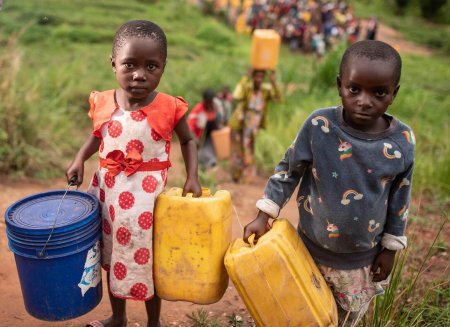
Globally, more than 1.42 billion people, including 450 million children, live in areas of high, or extremely high, water vulnerability, according to a new analysis released by UNICEF. This means that 1 in 5 children worldwide does not have enough water to meet their everyday needs.
The analysis, part of the Water Security for Allinitiative, identifies areas where physical water scarcity risks overlap with poor water service levels. Communities living in these areas depend on surface water, unimproved sources, or water which can take more than 30 minutes to collect.
“The world’s water crisis is not simply coming, it is here, and climate change will only make it worse,” said UNICEF Executive Director Henrietta Fore. “Children are the biggest victims. When wells dry-up, children are the ones missing school to fetch water. When droughts diminish food supplies, children suffer from malnutrition and stunting. When floods hit, children fall ill from waterborne illnesses. And when water resources decline, children cannot wash their hands to fight off diseases.”
The data shows that children in more than 80 countries live in areas with high or extremely high water vulnerability. Eastern and Southern Africa has the highest proportion of children living in such areas, with more than half of children — 58 per cent — facing difficulty accessing sufficient water every day. It is followed by West and Central Africa (31 per cent), South Asia (25 per cent), and the Middle East (23 per cent). South Asia is home to the largest number of children living in areas of high or extremely high water vulnerability — more than 155 million children.
Children in 37 ‘hotspot’ countries face especially dire circumstances in terms of absolute numbers, the proportions of children affected, and where global resources, support and urgent action must be mobilized. This list includes Afghanistan, Burkina Faso, Ethiopia, Haiti, Kenya, Niger, Nigeria, Pakistan, Papua New Guinea, Sudan, Tanzania and Yemen.
SOURCE: UNICEF